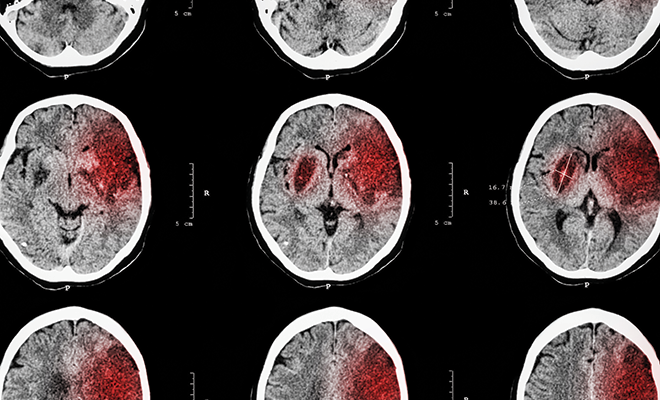
Coping with stroke: navigating the journey after
Pain, anxiousness, frustration and depression are just a few of the feelings that stroke survivors experience. Navigating the aftermath of stroke is often difficult for both the individual and those closest to them.
But getting back to a normal life is possible through an active approach of planning, rehabilitation and adapting to a new set of circumstances.
What is a stroke?
A stroke occurs if the flow of oxygen-rich blood to a portion of the brain is blocked. Without oxygen, brain cells start to die after a few minutes. Sudden bleeding in the brain, either from injury, a congenital condition or aneurysm, also can cause a stroke if it damages brain cells.
Most strokes occur in people 65 years and older, but a person of any age can have a stroke. The two main types are ischemic (more common) and hemorrhagic. Most strokes are ischemic and are caused by reduced blood flow to the brain when blood vessels are blocked by a clot or become too narrow for blood to pass. Brain cells in the area die from lack of oxygen. In hemorrhagic strokes, the blood vessel isn’t blocked, but it bursts and blood leaks into the brain, causing damage.
After a stroke
Stroke affects everyone differently, but most survivors improve over a period of time, and sometimes over a number of years. A survivor’s recovery from stroke involves making changes in the physical, social and emotional aspects of life. By making basic modifications, additional strokes can be prevented and life-long recovery begins.
Physical rehabilitation
Adapting to life after such an event can be daunting for both stroke survivors and caregivers. A trained occupational therapist can help patients manage daily activities and regain independence. In addition, patients may consider having an evaluation of their home so that returning there offers a safer, more manageable environment.
The success of stroke recovery varies depending on a number of factors, including how much damage the stroke caused, how soon recovery is started and how high the patient’s motivation is to work toward recovery. Patients and families should seek guidance from their medical team. Depending on the severity of the stroke, rehabilitation can include everything from in-hospital rehab to home therapy, outpatient therapy and/or long-term care.
Emotional recuperation
Patients experiencing depression, emotional lability or other personality and emotional changes should talk with their healthcare professionals and loved ones about treatment options. While it is normal to feel sad, angry or anxious after a stroke, some people will also worry about areas such as work, money, relationships and more. By going through a strategic rehabilitation and taking a more active approach to quality of life, patients can get back to normalcy and live as independently as possible.
Social response
Connecting with others is vital in the rehabilitation of stroke victims, but certain tasks and issues such as speaking clearly, understanding others, writing emails, mobility difficulties and fear of being around others can cause loneliness and disengagement. Studies have shown social integration is significantly related to overall stroke recovery and better quality of life. Post-stroke patients who received good physical care as well as love and support from family and friends showed healthier outlooks, less depression and faster recovery times.
While a loved one is recovering, the process can be facilitated by keeping them active. Go out. Stroke survivors and their caregivers should visit accessible places that they frequented before the stroke and also visit new destinations such as restaurants, museums, parks and shopping areas. Be with others. Although some people may feel uncomfortable if the survivor has physical limitations, most friends and family will be there for support. The more survivors and caregivers talk about the situation, the more comfortable it makes those around them.
Get involved in a stroke support group that supports your needs. And remember not to overdo it; don’t be hard on yourself or your loved one after setbacks. Start slowly. There’s plenty of time to evolve into a newer version of yourself.
Prevention of another stroke
Although some risks are hereditary, everyone can reduce their stroke chances through simple lifestyle changes. Smoking almost doubles the risk of stroke, and excessive alcohol consumption can be a factor. Controlling blood pressure, cholesterol and diabetes reduces risk as well as maintaining a healthy weight, eating a nutritious diet and exercising regularly. By modifying behaviors, knowing hereditary risks and being aware of warning signs, a person can dramatically decrease their chances of experiencing a stroke.
Life afterward
Stroke is frightening. It alters lives and can have a lifetime effect on victims and their loved ones. But starting recovery as early and thoroughly as possible increases every survivor’s chances of an easier transition back to normal life. With the right help and support, stroke doesn’t have to stop anyone from doing what they want to do and leading a full life. HLM
Sources: stroke.org, strokeassociation.org and stroke-network.com.







